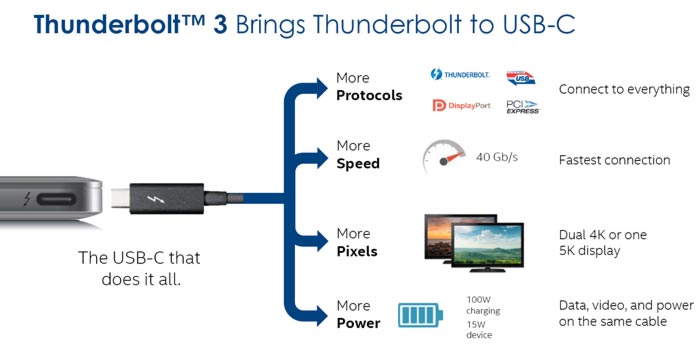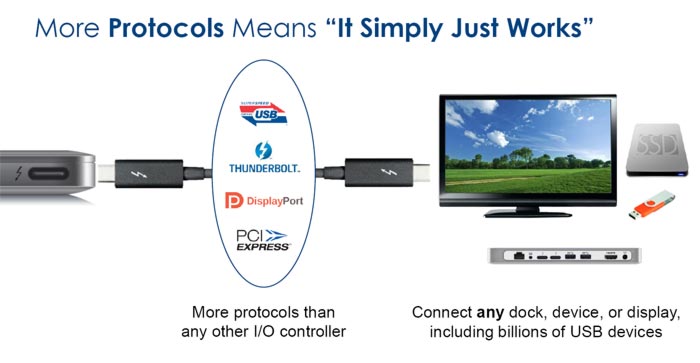Intel envisions a future where the everyday PC experience will be enhanced by state-of-the-art single cable docks, faster-than-ever storage, epic gaming, and lifelike Virtual Reality. It foresees Thunderbolt via USB Type-C to be a key enabler of these goals.

In a blog post today Chris Walker, the vice president of the Client Computing Group and general manager of the Mobility Client Platform at Intel Corporation, claimed Intel's Thunderbolt 3 solution is the natural successor to the ubiquitous USB port.
The new Thunderbolt 3 USB Type-C connector can do it all, says Walker, "today, and for many years to come." Intel hopes Apple, which has gone all-in with the port for its modern computers, is an example of history repeating itself - as the success of the original gel-coloured iMacs drove production and wide adoption of USB peripherals. At the current time Intel is claiming success as shown by more than 120 PC and peripheral designs with Thunderbolt 3, expected to ramp to 150+ by year end.

Two key strategic decisions have been made by Intel to help its visions of widespread Thunderbolt 3 adoption become reality. First of all Intel today announced that it will drive large-scale mainstream adoption of Thunderbolt by integrating Thunderbolt 3 into future Intel CPUs. Secondly, and perhaps even more importantly, Intel will release the Thunderbolt protocol specification, royalty-free, to the industry next year.

The compact and functionally flexible Thunderbolt 3 USB Type-C port has already enabled slimmer and sleeker designs from portable PC and mobile device makers. Intel reminds us of the wide variety of purposes which such a port can be utilised for. Docking devices and external storage are obvious uses, as it just takes over from where ye olde USB currently is ubiquitous. However external GPUs, single cable VR headset connections, and its greater power delivery possibilities put its ancestors in the shade.













